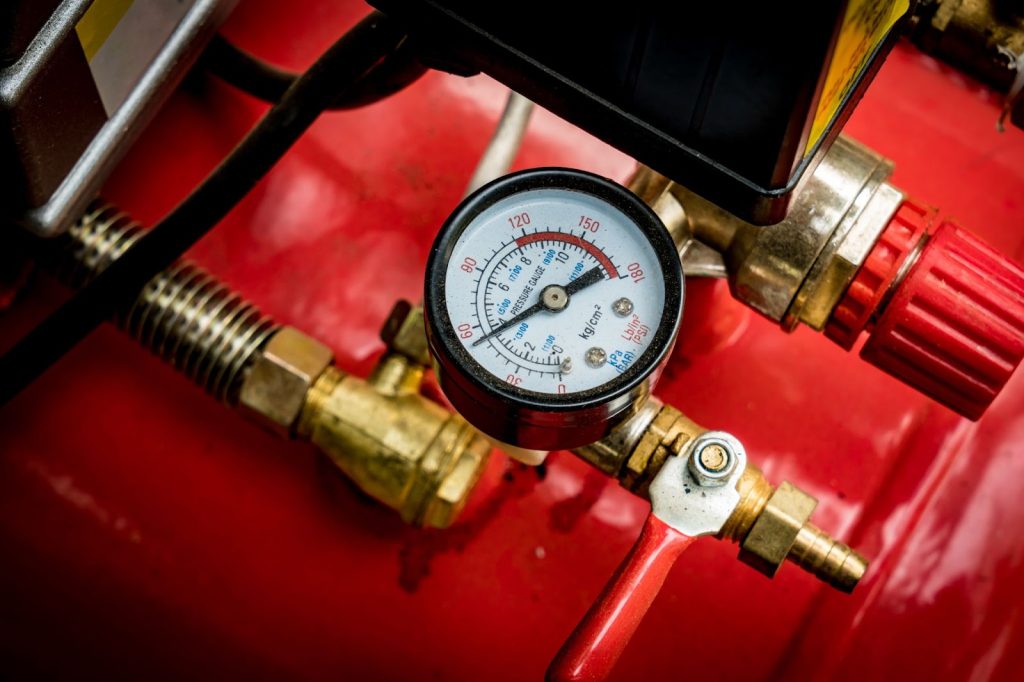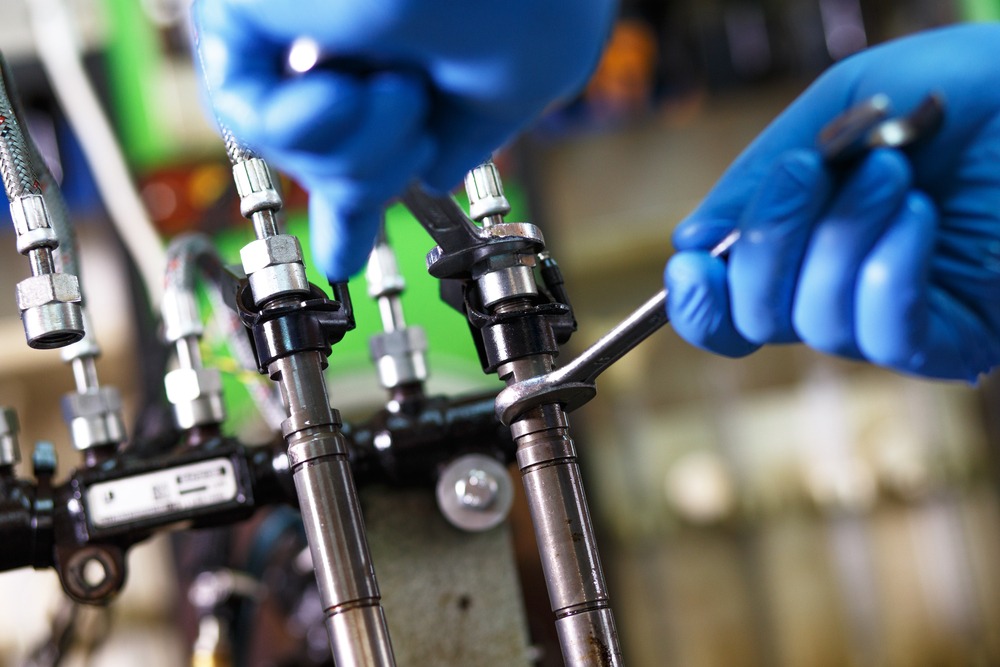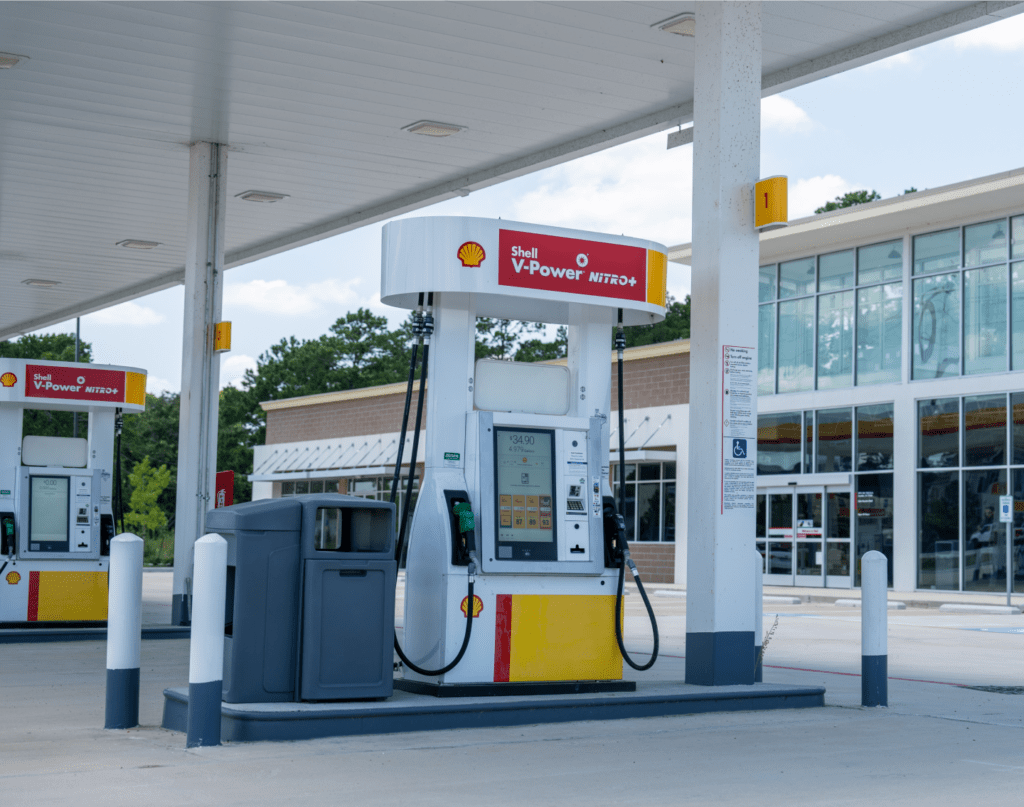
Fuel tank pressure testing is a crucial aspect of maintaining a vehicle’s fuel system integrity. It might seem counterintuitive, but a properly functioning fuel tank actually operates under a slight pressure. This pressure helps deliver fuel efficiently to the engine and also plays a role in evaporative emissions control.
By assessing the pressure within the tank, mechanics and vehicle owners can identify potential leaks, faulty components, and overall system health. This article discusses fuel tank pressure testing, including its significance, procedure, and implications for vehicle performance.
WHAT IS FUEL TANK PRESSURE TESTING?
A fuel tank pressure test and gas cap pressure tester are diagnostic procedures that check the ability of your fuel tank or gas cap to hold pressure. This involves pressurizing the tank with compressed air and monitoring for leaks or pressure loss.
WHY IS FUEL TANK PRESSURE TESTING IMPORTANT?
There are several reasons why fuel tank pressure testing is crucial. By detecting issues early through pressure testing, costly repairs and fuel wastage can be avoided.
Maintaining fuel efficiency
A leaky fuel tank can disrupt the proper pressurization, leading to problems like increased fuel consumption and engine performance issues.
Reducing emissions
A properly functioning fuel tank pressure system helps minimize the release of harmful hydrocarbon vapors into the atmosphere.
Safety
Leaks in the fuel tank can pose a serious fire hazard. Regular pressure in fuel tank testing helps identify potential problems before they escalate.
WHEN SHOULD YOU PERFORM FUEL TANK PRESSURE TESTING?

Fuel tank pressure testing should be performed regularly as part of routine maintenance, especially for older vehicles or those with high mileage.
Here are some situations where a fuel tank pressure test might be recommended:
Noticing a decrease in fuel efficiency
If you’re filling up more often than usual, a leaky fuel tank could be the culprit.
Experiencing engine performance problems
Leaks or pressure issues can affect how fuel is delivered to the engine, leading to rough idling or hesitation.
Suspecting damage to the fuel tank
If your car has been in an accident or you’ve noticed any dents or scratches near the fuel tank, a pressure test can help identify any internal damage.
Routine maintenance
Some manufacturers recommend including fuel tank pressure testing as part of a regular vehicle maintenance schedule.
HOW IS FUEL TANK PRESSURE TESTING CONDUCTED?
Fuel tank pressure testing involves several steps. A qualified mechanic will typically perform a gas tank pressure test using specialized equipment.
Here’s a simplified breakdown of the process:
- The mechanic will seal off the fuel tank’s openings.
- Compressed air is introduced into the tank to reach a specific pressure.
- A pressure gauge is used to monitor the pressure level over a period of time.
- The mechanic will inspect the tank and its components for leaks using a soapy water solution.
WHAT SHOULD YOU DO TO PREPARE FOR A FUEL TANK PRESSURE TEST?
There’s minimal preparation required on your end. Before conducting a fuel tank pressure test, it’s essential to ensure that the vehicle is parked on a level surface and that the fuel tank is not overfilled.
It’s helpful to inform the mechanic if you’ve noticed any recent issues with fuel efficiency or engine performance. Any diagnostic trouble codes related to the fuel system should be addressed beforehand to ensure accurate test results.
CAN YOU PERFORM FUEL TANK PRESSURE TESTING AT HOME?
While there are DIY methods involving submerging the tank in water, fuel tank pressure testing is generally recommended for qualified mechanics due to the specialized tools and safety considerations involved. For most vehicle owners, it’s recommended to have pressure testing conducted by a qualified mechanic or at a reputable auto repair shop.
HOW TO TEST A FUEL TANK PRESSURE SENSOR

Testing a fuel tank pressure sensor is essential to ensure the proper functioning of your vehicle’s fuel system.
Here’s a step-by-step guide on how to test a fuel tank pressure sensor:
1. Prepare Your Vehicle
Park your vehicle on a level surface and engage the parking brake. Ensure the engine is turned off and allow it to cool down if it has been running.
2. Locate the Fuel Tank Pressure Sensor
The fuel tank pressure sensor is typically located on or near the fuel tank. Refer to your vehicle’s service manual or consult with a mechanic if you’re unsure about its exact location.
3. Inspect the Sensor
Visually inspect the sensor for any signs of damage, corrosion, or loose connections. Ensure that the sensor and its wiring harness are securely attached and free from debris.
4. Perform a Visual Check
Look for any visible cracks, leaks, or physical damage on the sensor and its surrounding components. If you notice any issues, they may indicate a need for replacement rather than testing.
5. Use a Diagnostic Scanner
Connect a diagnostic scanner or code reader to your vehicle’s onboard diagnostic (OBD-II) port. This port is usually located under the dashboard on the driver’s side.
6. Access the Sensor Data
Use the diagnostic scanner to access the live data stream from the fuel tank pressure sensor. Look for parameters such as pressure readings, voltage, and sensor status.
7. Compare Readings
Compare the readings displayed on the scanner with the specifications provided in your vehicle’s service manual. Pay close attention to the fuel tank pressure values, which should fall within the specified range.
8. Perform Functional Tests
Some diagnostic scanners allow you to perform functional tests on sensors. Use this feature to activate the fuel tank pressure sensor and observe its response. The sensor should react accordingly, indicating a change in pressure.
9. Test the Wiring
Check the wiring harness connected to the fuel tank pressure sensor for continuity and proper voltage. Use a multimeter to test for voltage supply and ground connections while the sensor is operating.
10. Interpret Diagnostic Trouble Codes (DTCs)
If your vehicle’s onboard computer has detected any faults related to the fuel tank pressure sensor, retrieve and interpret the diagnostic trouble codes (DTCs) using the diagnostic scanner. Address any detected issues accordingly.
11. Clear DTCs (Optional)
Once testing is complete and any issues have been resolved, use the diagnostic scanner to clear any stored DTCs from the vehicle’s computer memory.
12. Reassemble and Test
Reassemble any components that were removed or disconnected during testing. Start the engine and test drive the vehicle to ensure that the fuel tank pressure sensor is functioning correctly and that no warning lights reappear on the dashboard.
WHAT ARE THE COMMON RESULTS OF FUEL TANK PRESSURE TESTING?
During fuel tank pressure testing, several outcomes may arise. Ideally, the pressure levels within the tank should remain stable within the specified range. A successful test will show the tank holding pressure within the specified range with no leaks detected. If the pressure in the gas tank drops or leaks are found, the pressure may fluctuate or fail to reach the desired level, and further inspection and repairs will be necessary.
WHAT HAPPENS IF YOUR FUEL TANK FAILS THE PRESSURE TEST?

A failing fuel tank pressure test indicates a leak or damage within the system. Depending on the severity, repairs might involve patching the leak, replacing faulty components, or even in rare cases, needing a whole new fuel tank. It’s essential to diagnose and repair the issue promptly to prevent further damage and ensure the safety and efficiency of the vehicle.
HOW MUCH DOES FUEL TANK PRESSURE TESTING COST?
The cost of fuel tank pressure testing can vary depending on several factors, including the location, the vehicle’s make and model, and the extent of any repairs needed. Generally, the cost for a basic pressure test can range from $50 to $150, but additional expenses may apply if repairs are necessary.
Check out ABC MARTS, for a quotation on top-tier fuel products and expert services.
WHAT OTHER FUEL SYSTEM TESTS MIGHT BE PERFORMED ALONGSIDE PRESSURE TESTING?
Fuel tank pressure testing is just one aspect of maintaining a healthy fuel system. In addition to fuel tank pressure testing, other diagnostic tests may be performed to assess the overall health of the fuel system. These tests may include fuel injector testing, fuel pump testing, and fuel pressure testing. Performing a comprehensive evaluation can help identify any underlying issues and ensure the proper functioning of the entire fuel system.
PARTNER WITH A TRUSTED WHOLESALE FUEL DISTRIBUTOR IN TEXAS
Fuel tank pressure testing is a critical aspect of vehicle maintenance that helps ensure the safety, efficiency, and performance of the fuel system. By conducting regular pressure tests and addressing any issues promptly, vehicle owners can avoid costly repairs and maintain optimal driving conditions.
For trusted fuel distribution services in Texas, consider partnering with ABC MARTS, a reputable wholesale fuel distributor committed to delivering quality products and exceptional service. Contact ABC MARTS for more information.

